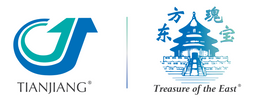4 Syndrome Differentiations of Chronic Atrophic Gastritis: Class Highlights from Dr. Suiping Huang
Dr. Huang shared the most effective ways to differentiate and treat Chronic Atrophic Gastritis (CAG). CAG is considered a precursor lesion for gastric cancer, however, treatment aimed at arresting atrophy progression can be an effective strategy for preventing gastric cancer. After providing a summary of the disease, Dr. Huang explained how CAG can present in four different ways and presented the ideal treatment protocol for each case.
1. Syndrome due to disharmony between liver and stomach
- Primary symptoms: (1) distension and fullness or pain in stomach; (2) distension and fullness or pain in hypochondriac regions
- Secondary symptoms: (1) exacerbated by disrupted emotions; (2) belching; (3) hiccup; (4) acid regurgitation; (5) no appetite for food; (6) endoscopic results show reddened and whitened stomach lining accompanied by bile speckle due to bile reflux
- Tongue and pulse: thin and white or yellow coating; string-like pulses
- Therapeutic principles: soothe liver, regulate qi, and harmonize stomach
- Formulas: Si Ni San with Ban Xia Hou Po Tang
- Dr. Huang’s Formula Ingredients: Chai Hu, Shao Yao, Zhi Shi, Ban Xia, Hou Po, Zi Su, Wu Zhi Mao Tao, Fu Ling, Sheng Jiang, Gan Cao, Su Xin Hua
- Primary symptoms: fullness and distension of stomach and abdomen
- Secondary symptoms: (1) stomach upset; (2) poor appetite; (3) abdominal distension after food intake; (4) belching and borborygmus; (5) loose stools with ungratifying defecation; (6) endoscopic results show reddened and largely whitened stomach lining with thinner mucosa and profuse turbid mucus, perceived vessels underneath and less gastric peristalsis
- Tongue and pulse: pink tongue with thin white and greasy coating; string-like or slippery pulses
- Therapeutic principles: reinforce spleen, move qi, and harmonize stomach
- Formula: Based on Liu Jun Zi Tang
- Dr. Huang’s Formula Ingredients: Dang Shen, Wu Zhi Mao Tao, Bai Zhu, Fu Ling, Gan Cao, Chen Pi, Ban Xia
- Primary symptoms: distension or pain in the stomach
- Secondary symptoms: (1) little food intake; (2) abdominal distension; (3) watery stools and ungratifying defecation; (4) unsurfaced fever; (5) heaviness of body and limbs; (6) endoscopic results show red and white lining of particles or nodules with turbid mucus
- Tongue and pulse: red and enlarged tongue with yellow thick or greasy coating; slippery and rapid pulses
- Therapeutic principles: reinforce spleen and harmonize stomach, clear heat, and resolve dampness
- Formulas: Based on Si Jun Zi Tang and Lian Po Yin, modified as needed
- Dr. Huang’s Formula Ingredients: Dang Shen, Wu Zhi Mao Tao, Bai Zhu, Fu Ling, Gan Cao, Ban Xia, Dan Dou Chi, Hou Po, Huang Lian, Shi Chang Pu, Zhi Zi, Ban Zhi Lian, Bu Zha Ye, Bai Mu Xiang
4. Syndrome due to spleen deficiency and static blood
- Primary symptoms: distension and fullness or localized pain in the stomach
- Secondary symptoms: (1) prolonged stomach pain or distension and fulness; (2) stabbing pain in the stomach and aversion to pressure; (3) little food intake, spleen distension, loose stools; (4) lusterless complexion; (5) black stools; (6) endoscopic results show red and white lining in shapes of particles or nodules accompanied by petechiae and grey, white, or brown mucus, clearly seen vessels underneath in dark red
- Tongue and pulse: dark, pink, and slightly red tongue, purple lips may be accompanied by petechia; string-like, uneven, or weak pulses
- Therapeutic principles: reinforce spleen, tonify qi, activate blood, and resolve blood stasis
- Formulas: Based on Si Jun Zi Tang and Dan Shen Yin, modified as needed
- Dr. Huang's Formula Ingredients: Huang Qi, Wu Zhi Mao Tao, Dang Shen, Bai Zhu, Fu Ling, Gan Cao, Dan Shen, Tan Xiang, Sha Ren, E Zhu, San Leng, Liang Mian Zhen
During his lecture, Dr. Huang also provided herbal modifications for specific symptoms, shared unique formulas from other experts at Guangdong Provincial Hospital of Chinese Medicine, and explored how integrated Chinese and Western therapies have great potential to alleviate CAG diseases.
The full video recording of this session is available HERE for those who are logged in and registered through the World Chinese Medicine Forum. Even though the live class has passed, you can still REGISTER to view the recording and learn from Dr. Suiping Huang’s clinical expertise. Join us next month for the final class of the series: Inflammatory Bowel Disease.
The information in this article is not intended or implied to be a substitute for professional medical advice, diagnosis or treatment, and is intended for only licensed healthcare practitioners.



















